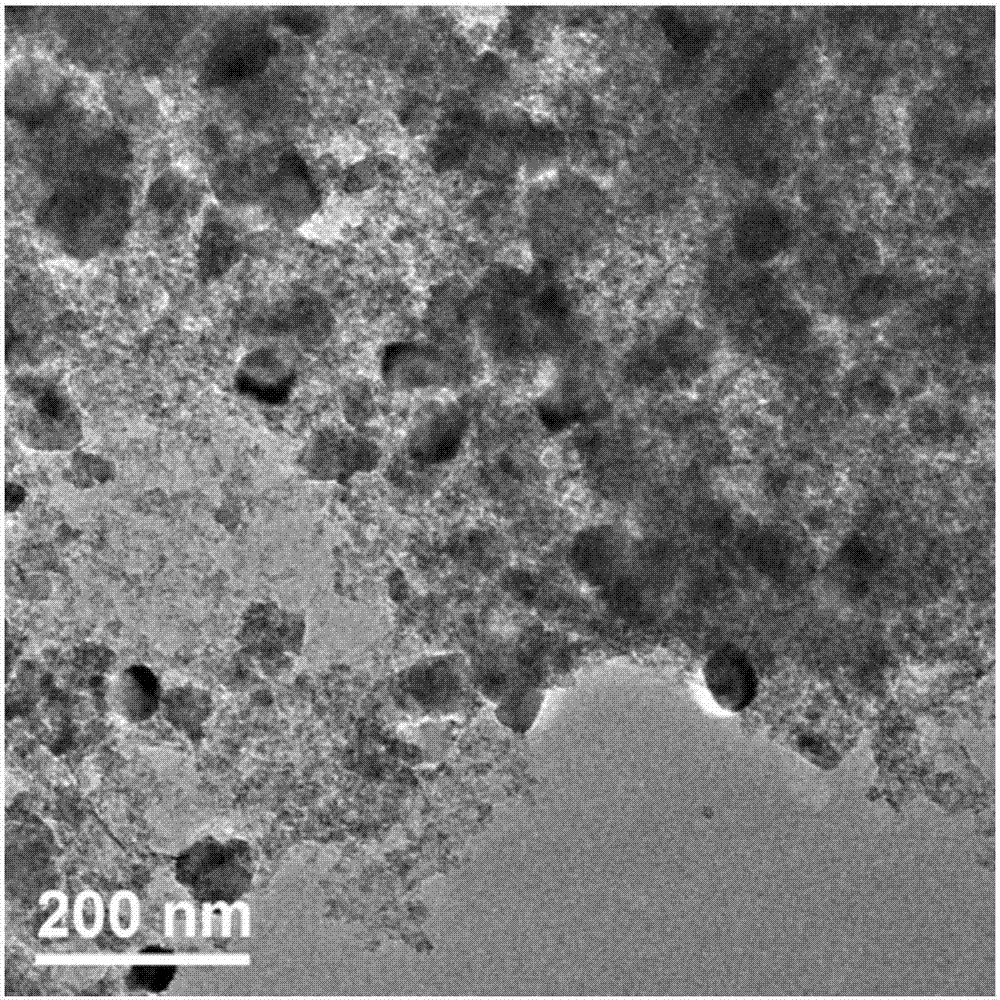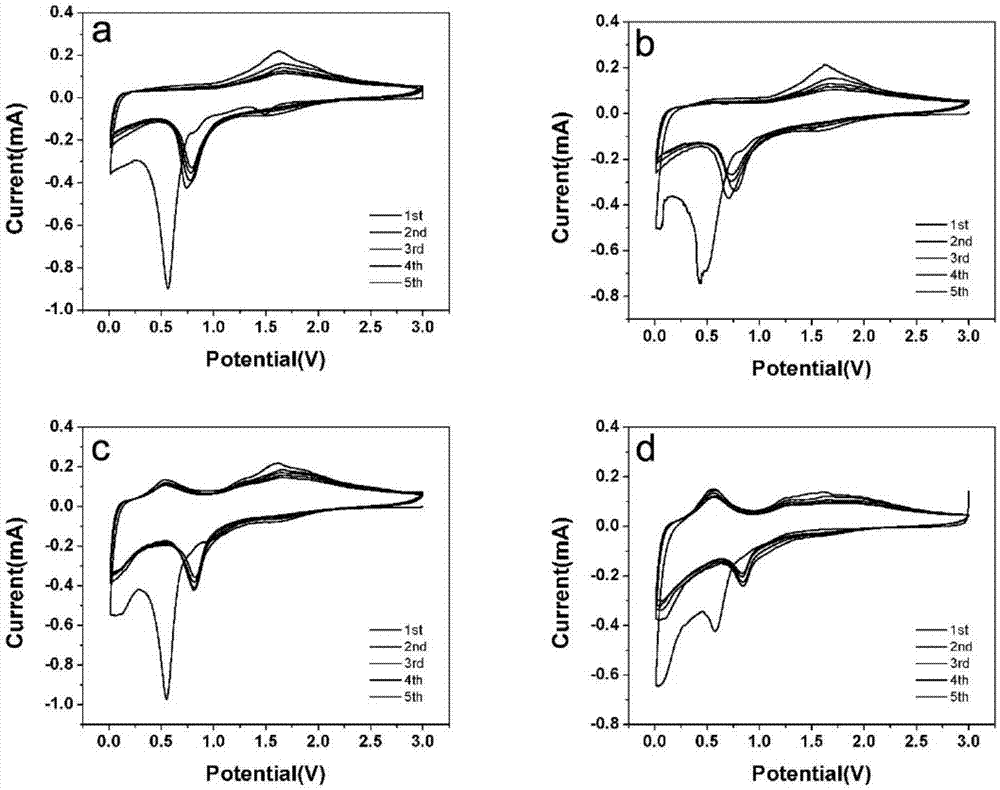Tin dioxide/nickel ferrite/graphene composite material as well as preparation method and application thereof
A technology of graphene composite and composite materials, which is applied in the direction of secondary batteries, electrochemical generators, structural parts, etc., can solve the problems of unsuitability for large-scale industrial production, excessive resource consumption, and harsh synthesis conditions. The method is environmentally friendly, the particles are uniform, and the shape is controllable
- Summary
- Abstract
- Description
- Claims
- Application Information
AI Technical Summary
Problems solved by technology
Method used
Image
Examples
Embodiment 1
[0035] In the first step, 0.34 g of nickel nitrate hexahydrate and 0.93 g of iron nitrate nonahydrate were dissolved in 25 mL of deionized water.
[0036] In the second step, 0.045 g of stannous chloride dihydrate was dissolved in 25 mL of ethylene glycol solution.
[0037] In the third step, 100 mg of graphite oxide was dissolved in 25 mL of deionized water and ultrasonically dispersed to form a uniformly dispersed single-layer graphene oxide mixed solution.
[0038] In the fourth step, slowly add the mixed solution obtained in the first step and the second step into the single-layer graphene oxide mixed solution obtained in the third step and continue stirring for 30 minutes to form a mixed solution 1.
[0039] Step 5: Add 4 g of urea to the mixed solution 1, and continue stirring for 30 minutes to obtain the mixed solution 2.
[0040] In the sixth step, the mixed solution 2 was transferred to a 100 mL stainless steel reactor and reacted at 180° C. for 20 h.
[0041] In the ...
Embodiment 2
[0048] In the first step, 0.26 g of nickel nitrate hexahydrate and 0.73 g of iron nitrate nonahydrate were dissolved in 25 mL of deionized water.
[0049] In the second step, 0.135 g of stannous chloride dihydrate was dissolved in 25 mL of ethylene glycol solution.
[0050] In the third step, 100 mg of graphite oxide was dissolved in 25 mL of deionized water and ultrasonically dispersed to form a uniformly dispersed single-layer graphene oxide mixed solution.
[0051] In the fourth step, slowly add the mixed solution obtained in the first step and the second step into the single-layer graphene oxide mixed solution obtained in the third step and continue stirring for 30 minutes to form a mixed solution 1.
[0052] Step 5: Add 4 g of urea to the mixed solution 1, and continue stirring for 30 minutes to obtain the mixed solution 2.
[0053] In the sixth step, the mixed solution 2 was transferred to a 100 mL stainless steel reactor and reacted at 180° C. for 20 h.
[0054] In th...
Embodiment 3
[0060] In the first step, 0.19 g of nickel nitrate hexahydrate and 0.52 g of iron nitrate nonahydrate were dissolved in 25 mL of deionized water.
[0061] In the second step, 0.225 g of stannous chloride dihydrate was dissolved in 25 mL of ethylene glycol solution.
[0062] In the third step, 100 mg of graphite oxide was dissolved in 25 mL of deionized water and ultrasonically dispersed to form a uniformly dispersed single-layer graphene oxide mixed solution.
[0063] In the fourth step, slowly add the mixed solution obtained in the first step and the second step into the single-layer graphene oxide mixed solution obtained in the third step and continue stirring for 30 minutes to form a mixed solution 1.
[0064] Step 5: Add 4 g of urea to the mixed solution 1, and continue stirring for 30 minutes to obtain the mixed solution 2.
[0065] In the sixth step, the mixed solution 2 was transferred to a 100 mL stainless steel reactor and reacted at 180° C. for 20 h.
[0066] In th...
PUM
 Login to View More
Login to View More Abstract
Description
Claims
Application Information
 Login to View More
Login to View More - R&D
- Intellectual Property
- Life Sciences
- Materials
- Tech Scout
- Unparalleled Data Quality
- Higher Quality Content
- 60% Fewer Hallucinations
Browse by: Latest US Patents, China's latest patents, Technical Efficacy Thesaurus, Application Domain, Technology Topic, Popular Technical Reports.
© 2025 PatSnap. All rights reserved.Legal|Privacy policy|Modern Slavery Act Transparency Statement|Sitemap|About US| Contact US: help@patsnap.com



